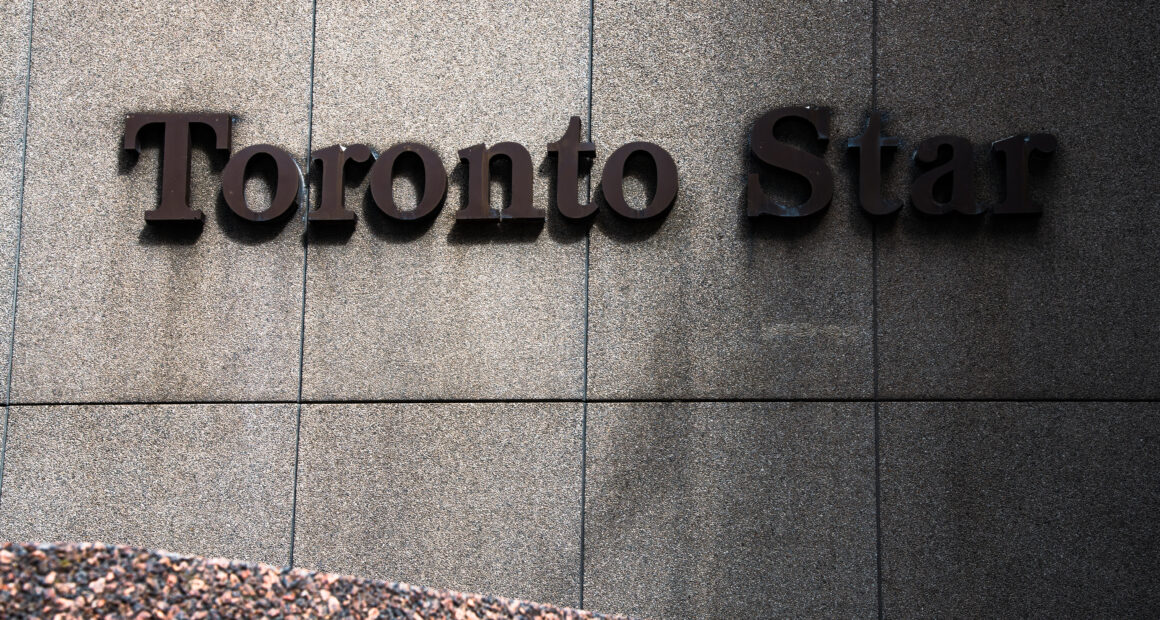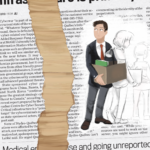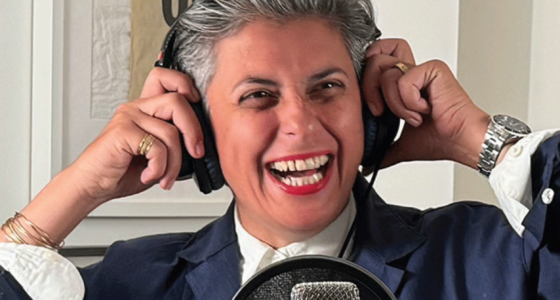For generations, the Toronto Star has had a reputation as a progressive paper. But does its newsroom culture live up to its own ideals?
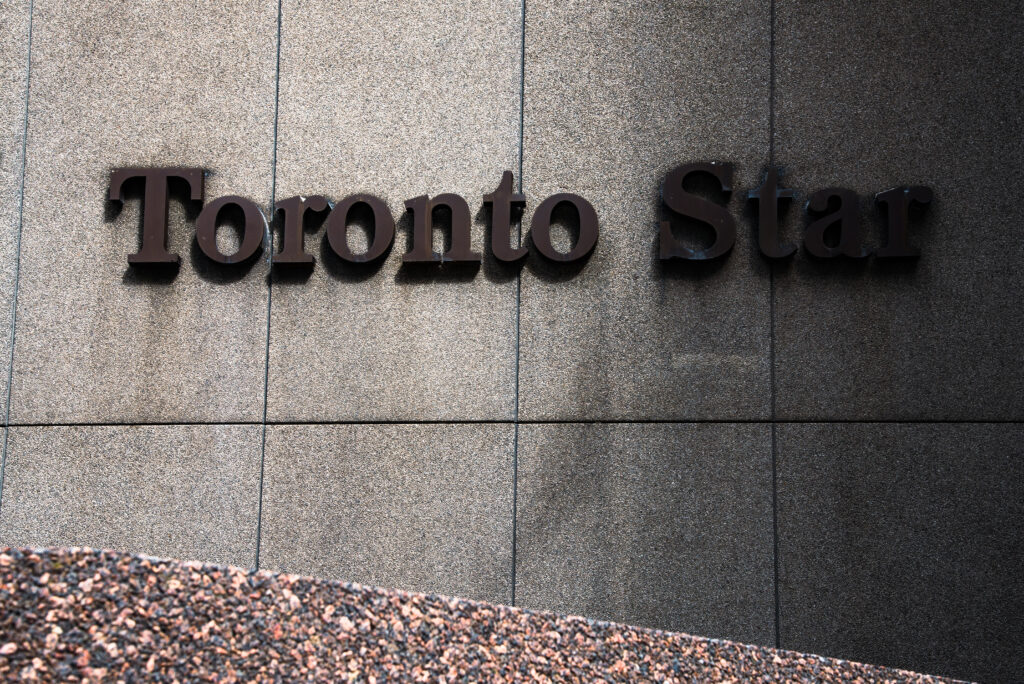
When Theresa Boyle landed a full-time job at the Toronto Star in 1994, she was drawn by the paper’s reputation, and in particular by the Atkinson Principles, a guiding set of values that encourage Star journalists “to contribute to the advancement of society through pursuit of social, economic and political reforms.” Boyle loved her work. So much so that she stayed with the paper throughout her career, enduring changes in ownership, management, and editorial teams. Her passion for journalism and the friends she made in the newsroom helped her feel like this loyalty was rewarded. But things slowly started unravelling.
One evening in April 2019, everything hit a breaking point. Boyle had just eaten dinner when she felt a sudden sharp pain under her throat. Figuring it was some sort of muscle stitch, she paced around her house hoping to stretch it out. But the pain spread across her shoulder and down her arm. Her body, she realized, was unusually clammy. As a health reporter, she was familiar with the preconditions and statistics for heart attacks. Her mind wandered to the worst-case scenario.
She finally made her way to the ER but felt silly for going. “I was 100 percent sure that if I went there, they’d tell me it was nothing and just send me home. And I just didn’t want to burden them with that when they were already so burdened,” she says. “I really thought I would just be coming right back home.”
Boyle spent the night in the hospital while tests were carried out to determine if she had suffered a heart attack. She would soon be diagnosed with SCAD—spontaneous coronary artery dissection—an emergency condition that occurs when a tear forms in the heart’s artery wall. Though the causes of SCAD are unknown, Boyle would later discover that she also suffered from fibromuscular dysplasia, which may predispose people to developing SCAD. However, commonly reported triggers also include extreme physical or emotional stress. Boyle and her doctors discussed her medical history, her diet, and whether she had been experiencing irregular amounts of stress.
She paused at the last topic. At that moment she suspected what may have triggered the heart attack.
“I survived journalism-related stress for 24 years,” Boyle says. “But it was the workplace that did me in.”
For generations the Toronto Star has enjoyed the reputation of a progressive paper, boasting a long-standing commitment to its oft-cited Atkinson Principles, which include a focus on social justice and improving conditions for workers. However, according to some staff reporters and former employees, it’s time the Star reforms its own newsroom culture. In more than half a dozen exclusive interviews with the Review, these journalists described a pattern of harmful practices that has resulted in some staffers leaving the newsroom, many of whom—unlike Boyle—are younger and racialized. In fact, Boyle’s story seems to be the tip of the iceberg.
Following the suicide of Star reporter Raveena Aulakh, a workplace culture review was conducted in early 2017. The final report of that review, titled Culture as a Strategic Priority, was released to Star employees a few months later. In the fall of 2022, the Review obtained a copy of the report, which includes claims of disrespectful conduct, inappropriate behaviour, abuse, and more. Staff say the organization has for the most part failed to act on them, and some say long-standing issues continue to fester. Just how deep do organizational issues run at the Star and how do they seep into the workplace culture?
Most of the journalists the Review spoke with in relation to this story requested anonymity, concerned about the possible effect on their careers. They are referred to interchangeably as journalist, reporter, and staffer.
A Star Is Born
Last November, the Star celebrated its 130th anniversary, marked by the usual retrospectives highlighting past work and celebrated reporters—and, of course, the legacy of Joseph E. Atkinson, whose beliefs about what a newspaper should represent have coalesced into the revered Atkinson Principles. It’s difficult to think of another Canadian publication that places such emphasis on its storied past. Last November the paper moved to Front Street and Spadina Avenue from 1 Yonge Street, which had been its headquarters for five decades. Left behind, at least temporarily, was a gold-trimmed, burgundy Heritage Canada plaque bearing tribute to Atkinson:
“One of Canada’s most influential newspapermen, Atkinson became managing editor of the Toronto Star in 1899, and its majority owner by 1913. Originally hired by supporters of Sir Wilfrid Laurier, he sought to make the daily an instrument of social reform. His many and often sensational innovations changed the face of Canadian journalism, and made the Star Canada’s largest circulation newspaper by the 1930s.”
Atkinson’s life and rise as champion of “the disadvantaged and destitute” is chronicled in the nearly hour-long documentary Fighting Words: The Social Crusades of Joseph E. Atkinson, released by the Atkinson Foundation in 2007. It’s easy to see how this enduring legacy and the Star’s distinguished reputation can catch the attention of young, bright-eyed journalists looking to build a career in what can often feel like a claustrophobic Canadian news media landscape. The possibility of a job at the Star still leaves many a novice reporter, well, starry-eyed. As far as newsrooms go, according to one senior reporter, “It was probably the least toxic place for a long time.”

A more recent documentary, Viral News, released last November by TVO, paints a rosy vision of the newspaper as it shows Star journalists, owners, and staff dealing with the emergence of COVID-19. Within the first six minutes of the film, owner Jordan Bitove can be heard citing the Atkinson Principles as one of the primary reasons he was attracted to the paper. A later scene features off-screen staffers waxing poetic about the principles. “It’s the Kool-Aid you sip on when you first walk in the door,” says a voice. “And it’s real. You feel it.”
But the atmosphere of self-praise about being a forward-thinking and liberal organization doesn’t always line up with reality, say some current and former reporters, who found working in the newsroom far different. These journalists are growing weary—tired of fighting dated ideas and poor editorial judgments that they believe sincerely hurt the brand of the Toronto Star as a “paper for the people” that champions the working class and the marginalized, while receiving inadequate support in return.
“I find people who come from [other] media to the Star are quite surprised at how not open it is,” one senior reporter tells the Review. When it comes to having frank discussions in the newsroom, the reporter adds that the Star falls short. “[It] has this image that ‘Oh, we’ve already reached the zenith of progressiveness.’ And so they just shut it down.”
The reporter says there’s at least one basic solution that would help. “More people from different backgrounds, who are not saying the thing that their powerful owners and editors-in-chief and editors want to hear—that’s how we improve this industry.”
Unfortunately, it seems those “people who are willing to see things differently” are the ones who are leaving, or on the verge of departure.
Workplace Culture: Problem or Priority?
Perhaps no incident has shaken newsroom staff at the Star more than when Raveena Aulakh, an award-winning reporter, took her life in May 2016. In the fallout of the widely publicized death, those close to Aulakh held a memorial for her. Meanwhile, management grappled with how to share the news with the outside world while addressing the glaring workplace issues the tragedy cast a spotlight on. (The Spring 2017 issue of the Review looked at the series of events in depth in “Trouble at 1 Yonge.”)
An internal investigation was launched the following month by John Honderich. A celebrated businessman, journalist, and editor, Honderich started as a reporter at the Star in 1976, when his father, Beland, also known as “The Beast,” was editor and publisher. John Honderich eventually followed in his father’s footsteps, becoming editor of the newspaper in 1988 and publisher from 1994 to 2004. He later served as chair of Torstar, a holding company that primarily invests in news and media, from 2009 until 2020. A 1994 Review describes him as “friendly, outgoing, enthusiastic,” emphasizing his importance to the Star brand. He was as famous for his six-foot-two form and his bow ties as he was for his relentless optimism about the Star’s future. Like Atkinson’s, Honderich’s presence continues to loom large over the paper. The influential newspaperman died of a heart attack last February at the age of 75, resulting in a flurry of obituaries from the likes of Prime Minister Justin Trudeau, and he was posthumously honoured with a key to the city by Toronto’s mayor. Thus grew the pantheon of Star crusaders—and the succession of white men in charge of the paper.
Just after the 2016 investigation, a memo went out to all Star staff stating that Aulakh’s immediate manager had provided her with “outstanding and exceptional levels of support and assistance.” The memo, which was quickly leaked to and published by Canadaland, also claimed that an internal investigation had allowed “for greater transparency” while “providing the necessary level of independence.” Many were left unsatisfied. In response, Unifor Local 87-M, the union representing workers at Torstar, called for an independent external investigation into the newsroom culture.
There was resistance from management to this request, says veteran reporter Jim Rankin, who also serves as chair of the Toronto Star Unifor unit. They argued that the internal investigation had been enough. It took until October—four months after the initial call—for them to finally sign a memorandum of agreement allowing an external investigation. When they did so, Rankin says, it was on the condition that the specifics of the Aulakh tragedy would be omitted from the interviews with staff. Glenn French, president of the Canadian Initiative on Workplace Violence, and now retired human resources consultant Martin Birt were hired to facilitate the investigation.
Three town hall meetings were held in March 2017. Then broadcast emails were sent to newsroom staff encouraging them to schedule individual interviews. One source contends that workers who had recently accepted a buyout package were barred from participating, despite the fact that some had already worked there for years.
On May 15, the final report, Culture as a Strategic Priority, was submitted to senior management. It reveals a set of concerns from Star staffers ranging from favouritism to sexual harassment and abuse.
“Faced with increased ambiguity, absent or inconsistently applied processes, many describe themselves as being quite unsettled, believing that there was no one to either guide the organization or protect them from what some believe to be procedural injustices,” reads one section of the report. “This workplace climate has evolved over many years and has resulted in suspicion, fear and a sense of helplessness among too many people.”
For many staff, the results of the culture review were unsurprising. “You’d read this report, even without the names, but you kind of knew who or what was being talked about,” one Star journalist who left the following year says.
The explicit aim of the report is “helping to institutionalize cultural values including those reflected in the Atkinson Principles such as social responsibility, responsible corporate governance, fair treatment and environmental performance.” All in all, 11 themes are addressed in the recommendations: Performance Evaluation, Feedback and Coaching; Workload; Incivility & Harassment; Institutionalizing Culture; Newsroom Personnel Committee (PC); Personal Security/Trauma Response; Exit Interviews; Mentoring; Communication Plan; Overtime; and Work “Silos” (Information Sharing and Cooperation).
According to Rankin, the union held a meeting in the ballroom of a nearby hotel to discuss the conclusions and recommendations. There was talk about some of the issues brought up by staff being ignored in the final report, with one issue glaringly missing: race, diversity and representation.
While this concern did not seem to warrant any recommendations, a passage in the report does recognize that issues related to race and diversity were significant for many employees: “There was a healthy sample of individuals who expressed concerns about the Star’s lack of focus on diversity, not simply as an employer but also as a news source. This was a sentiment expressed throughout the interviews. Diversity for some needs to be addressed on many fronts, including as an employment issue and as a topic that would be of interest to Torontonians.”
“It felt like it had been sanitized,” says the former Star journalist about the report.

In response to the release of the culture review findings, a newsroom-wide memo was sent by Honderich and John Boynton, who was Torstar president and CEO and Toronto Star publisher until April 2021. It read, in part: “We are fully committed to working with the union leadership and the staff to address many of the issues expressed to the facilitators during their meeting with newsroom employees. Indeed, we have already taken constructive steps on a number of these issues and more will be undertaken in the near future…[and] we will keep you informed of the steps we will be taking.”
The former journalist says this did not happen. “We were constantly asking, ‘We want an update on this. We want to know what you’re doing.’ And they just kept pushing us off.” Eventually, the source says, management’s solution was to appoint new leadership. The Review has been unable to find any formal implementation of the culture review’s recommendations. In the words of a former long-time staffer, the recommendations have simply “gathered dust.”
But Rankin, who has spent more than three decades at the Star, sees it another way. He asserts that it’s important to recognize that most of the Star leadership has transformed in the years since the culture review, adding that while change doesn’t happen overnight, there have been some positive developments. He notes a marked improvement in communication between management and staff, pointing out the increase in town halls and group meetings—“which we’re all sick of at this point,” he jokes.
“I had never felt the double glass ceiling so acutely as I had at the Star.” — former journalist
Another measurable action taken because of the culture review is a major boost to workers’ mental health benefits. Like many media outlets, the Star has an employee assistance program that offers counselling paid for by the employer. Alternatively, employees can find their own counselling services. Full-time Star employees now get $5,000 in mental health coverage per year, a substantial amount in the industry. The response is mixed. One former reporter says that by offering staff such considerable benefits, the company is essentially outsourcing its duty of care.
These positive changes notwithstanding, the impact of the report’s findings on staff morale has been greater than the leadership realizes, according to the journalist. “At no point did any of the newsroom leaders who were there at the time that the report was made stand in front of the newsroom and say, ‘We own this. We know that this wasn’t a good place to work, and we’re sorry,’” she says. “There’s no real understanding of who was behind some of those serious aggressions. And now you see those people who we know were some of the bullies in the workplace being promoted or being given things that were taken away. And I think that’s super problematic. There’s a really good argument for why it might have been important to have more accountability built in that report.
“That, to me, was a pivotal moment at the Star.”
“Unnaturally White”
“The Toronto Star was always the paper, like my paper. My parents read it. I really thought it was the most progressive of the dailies. I mean, I think that’s still true,” shares a former journalist. But arriving at the newsroom as a woman of colour and finding few racialized journalists was a “major shock,” she says.
“I had never felt the double glass ceiling so acutely as I had at the Star. The people of colour were there in the most precarious roles in the newsroom, and often at the bottom of any seniority list if they’re permanent,” she says. “That newsroom is still really white in terms of who occupies those decision-making roles.” She adds that in her time at the paper, there was only one person of colour in a leadership position in the newsroom. “So that in itself was really hard to swallow. Because you really didn’t have people to necessarily advocate for you.”
Public editor Donovan Vincent, who is Black, says the industry’s dire financial situation is partly to blame. “There was sort of stagnation throughout the media landscape that wasn’t just in Canada, but you know, North America and, really worldwide….A lot of newsrooms began to struggle. And there were hiring freezes, and there were layoffs. And around that time, diversity did take a hit….Survival became the priority.”
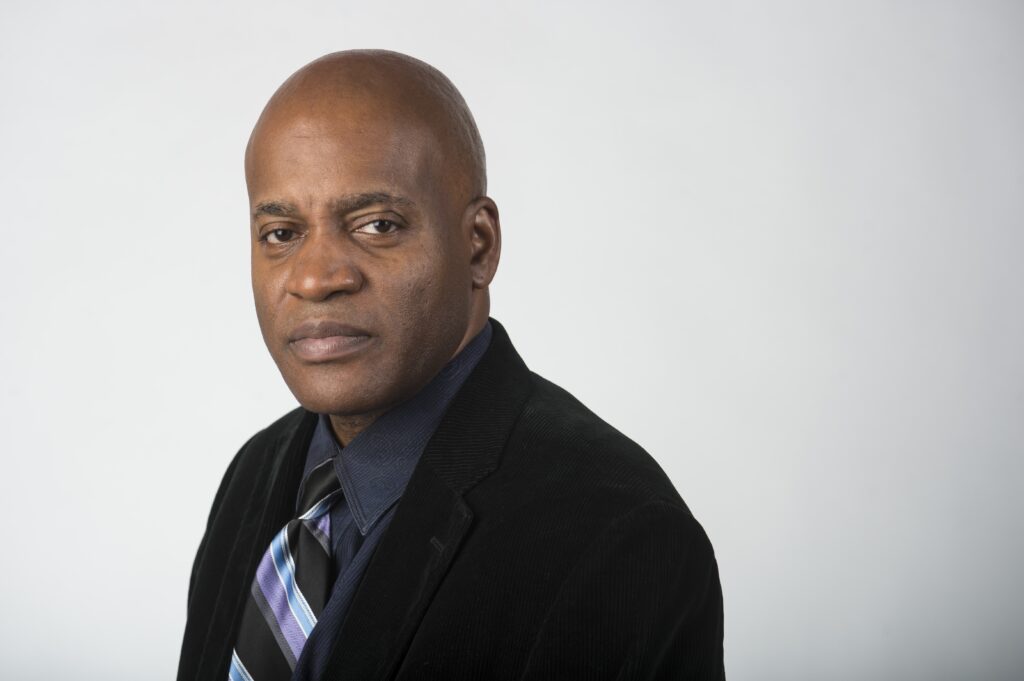
For racialized staff in the newsroom, microaggressions were a regular part of the job, says a former journalist, like sitting through meetings where potentially “tone-deaf” stories were pitched but would go unflagged by editors. Even when stories drew negative criticism from social media users and other journalists—like one about the 2017 Toronto International Film Festival that suggested readers pair a bottle of rosé with the movie 12 Years a Slave—one journalist says meaningful discussions with newsroom staff did not take place. Vincent disagrees, saying, “If there’s a story that blows up, there would be conversations.” But he admits that while he doesn’t mind doing so, it can be exhausting for others to be in the position of “informing non-BIPOC colleagues on different issues that have to be navigated and they kind of ask us for our input.”
The Star’s lack of diversity “was reflected in the content, it was felt in the newsroom,” says a former staffer. “[These issues] would just get swept under the rug, like, no one would talk about it, and there was no avenue to talk about it. So, you found yourself talking about it with other racialized journalists.” Many reporters describe turning to other racialized staff members for support when unable to find it with supervisors.
“When there’s so few of you in the newsroom, you can’t fight all the battles,” says the former staffer.
Last October, Islamophobic comments by columnist Vinay Menon in a piece about the protests in Iran resurrected the conversation about the Star’s coverage of race-related issues. After widespread backlash, the Star retracted one sentence and added an editorial note expressing “regret” over the original version. As public editor, Vincent—who sees himself as “the guy that comes in after the fact, after the mistakes have been made, the errors in judgment”—weighed in the following week.
He acknowledged some parts of the article had “crossed the line” and “clearly violated” editorial standards. But he tells the Review that the response wasn’t written “in a vacuum” and he consulted with other senior editors about it. “It’s not just me. Yes, I’m the only person of colour in that group and I bring a certain point of view.”
“These guys are the future. They’re young, they’re smart, and they’re super-talented.” — Donovan Vincent
The diversity policy on the Toronto Star’s website outlines a commitment by Torstar to “inclusivness [sic] and diversity reflective of our communities in its hiring, promotion, development and retention of its staff.” The numbers tell a different story. The Canadian Association of Journalists’ 2022 survey on newsroom diversity in Canada—only the second time such a survey has been conducted—shows that just 31 percent of Toronto Star staff who were accounted for in the survey identify as a “visible minority or Indigenous,” while only 12 percent of supervisors indicated the same.
A year earlier, the CAJ Diversity Survey found that eight in 10 Canadian newsrooms have no BIPOC journalists. While the Star was unable to provide data for the report, it responded by saying it would review hiring practices and improve retention and promotion of journalists from marginalized communities into editor and newsroom leader positions. Irene Gentle, a white woman who is the former editor and now Torstar’s vice president of inclusion and strategic partnerships, said at the time, “We need to ensure our company and newsrooms are a place people will want to work in and feel valued and inspired in, be a place they can grow their career. And that means hiring representatively is a step among many.”
In a written response to the Review, Gentle did not directly answer any questions related to the 2017 workplace culture review. Instead, she emphasized the “progress in newsroom diversity in leadership roles, in senior management and supervisory positions” made over the last year and “the steady progress we’ve made over the years in bringing in more people with lived experience and from diverse backgrounds at all levels of our organization. Newsroom leadership is committed to growing not only a more representative newsroom but one with equity built into its culture. We are not near a finishing line on any of this, but are making steady, ongoing progress and plan to see that continue and pick up pace in the future.”
Vincent says newsroom diversity is improving. “Is it at the level that it should be? You have to get different opinions on that,” he says. “What’s a good number? Should it be 50 percent women, people of colour? Or nearly 50 percent, as the City of Toronto is? I think that’s probably a reasonable target. And then not just at the entry level, but also at the higher levels as well as management and decision-making roles. That’s where the work needs to be done.”
“The goal is for a welcoming, equitable and inspiring workplace across the board and building that foundation brick by brick,” wrote Gentle. She also referred to her success in creating the role of internal ombud when she was editor (she is the first woman to hold the role in the Star’s history).
In 2020 columnist Shree Paradkar was appointed as the first internal ombud to, as Gentle explained at the time, help “provide a safe place for BIPOC journalists and all journalists to express editorial-related discrimination and bias concerns if they don’t feel comfortable bringing it to their manager directly.” In a column on social and racial justice, the first of its kind at the Star, Paradkar offered frank, introspective criticisms—once calling out her own newsroom for being “unnaturally white.”
“Non-representation in journalism is a form of oppression. It happens when we—Canadians—invite or accept newcomers to our mutual benefit, but then allow only one dominant group—whites—to play gatekeeper to all the stories, generation after generation,” Paradkar wrote.
While many welcomed Paradkar’s appointment, Rosie DiManno, the Star’s controversial and long-serving columnist, sent a newsroom-wide email calling it “a fucking abomination.” In response, over five dozen editors, digital producers, photographers, and radio room interns, and one librarian signed a letter—which was quickly leaked to the public—calling DiManno’s actions “an example of the racism, institutional and otherwise, that prompted the need for Paradkar’s position.”
There are major shifts happening, largely thanks to the new generation of BIPOC reporters and their allies, says Vincent.
“They don’t take any shit. These guys are intense. They’re brilliant journalists, first of all, because that’s the thing, if you’re not a good journalist, or you’re kind of on the sidelines, then your input has no impact. These guys are among the top journalists in the country, they’re award-winning here. They’re the cream of the crop, really, in terms of the work that they do.”
Yet he recognizes a persistent old-school attitude toward them. “When they come forward with a concern, there may be a few of the old [staffers], regardless, who just try to describe them as, you know, a disgruntled little cadre of complainers. And that is such a misrepresentation. It’s so ridiculous. These guys are the future. They’re young, they’re smart, and they’re super-talented. And they have a lot of sway in the newsroom because of the skills that they bring to the table.”

Of course, not everyone can take the risk of speaking up. Several people interviewed by the Review described fearing that they would be labelled as difficult or rebellious if they raised concerns about problematic editorial decisions. Two also described feeling like they needed to pick their battles when it came to voicing their opinions in the newsroom. It’s no surprise that some reporters are walking a tightrope—forced to choose between calling out coverage that is unfair or insensitive and risking being seen as a problem themselves or withholding their thoughts about content to avoid trouble.
In 2017 Desmond Cole resigned from his widely read column at the Star after being told he had violated the newspaper’s rules on journalism and activism a week prior by protesting at a Toronto Police Services Board meeting over the practice of carding and racial profiling—criticism that both seems to ignore the paper’s own Atkinson Principles and is also ironic, given the Star’s groundbreaking investigation into the phenomenon. In a blog post announcing the decision, Cole wrote, “If I must choose between a newspaper column and the actions I must take to liberate myself and my community, I choose activism in the service of Black liberation.”
“A Toxic Boyfriend”
Every year, hundreds of hopeful applicants vie for highly sought-after roles at the Star, Canada’s most widely circulated paper. Many of these people are recent interns and journalism school graduates. “Some of the new staff come to us with a whole lot of experience from other places,” says Rankin. “It’s almost insulting to refer to them as interns.” Yet two journalists with previous experience at other publications mentioned finding it hard to transition into their new roles without the right support.
“I think the Star relies a lot on the fact that there’s a lot of people who just can do the job,” says a staffer who started working at the paper before the pandemic, adding that on some days it’s easy to see why junior staff find it simpler to move on to another newsroom where they feel more supported. “For a lot of the people who have left, one of the big issues is feeling like you’re not getting attention and support from editors.”
“I just didn’t feel nurtured there,” confirms a former staffer who’s racialized who has since gone on to assume a leadership position at a different Canadian publication.
“You get praised for doing more work than others, even if doing all that work is bad for your mental health.” — Star reporter
Besides feeling they weren’t being guided through the process of bringing their own pitches to life, two sources who shared their experiences with the Review referred to stories they felt pressured to publish despite expressing resistance or concern. Each said they did not receive any support from editors or management when dealing with the fallout from these stories. Two sources went so far as to compare their relationship with the Star to having “a toxic boyfriend.”
It’s not uncommon for new reporters to go the extra length, putting in overtime hours, and covering beats they aren’t necessarily comfortable with to make a name for themselves or get noticed by editors, explains Rankin, who strongly advocates for these staff to ask for compensation for extra work. However, some journalists said there is a “man up” attitude in the newsroom, where staff members’ concerns are brushed aside or not taken seriously when they do bring up such issues. “There is an industry culture where we say journalists are tough. You know, this Hollywood idea of the journalist, everything just rolls off their backs,” says one senior reporter.
“Nobody discussed mental health in the entire industry. Even now there is only a very nascent push toward acknowledging mental health effects of the work we do,” says one senior Star reporter. “And then on top of it comes identity issues, which get layered on. So, you not only suffer what everybody does, because you’re doing the same kind of job, but because of who you are, you get more pushback at every level. I’m not even talking about abuse. I’m just talking about pushback, from pitching the story, to seeing the value in the story that you’ve pitched, to pushback during editing.”
Last year the Canadian Journalism Forum on Violence and Trauma released a first-of-its-kind report on mental health among Canadian media workers. More than 1,200 people, including staff at the Star, took part in a 20-minute survey. In the report, one Star reporter described feeling overworked: “You get praised for doing more work than others, even if doing all that work is bad for your mental health. You get told to take care of yourself but don’t witness anyone actually doing it, so you don’t feel like you can do it, too.”
“I believe most media structures in Canada are incredibly harmful to BIPOC journalists,” said another Star reporter in the report, noting the regular microaggressions at work. “In my four years working in journalism, I’ve had instances where the quality of my reporting was questioned because of my ethnicity […] and being accused that I didn’t do my due diligence on highly sensitive stories based purely on nothing but my ethnicity alone.”
The statement ends with a warning of sorts: “I fear that many journalists of colour will leave the industry (and some of my colleagues already have) because of these microaggressions, which will contribute to the continuation of an incredibly homogenous Canadian media landscape that fails to reflect the people and communities it reports on.”
“The onus is on the newsroom to make sure that we are being mindful of who’s suffering what and what they need.”
— Fatima Syed
When journalists do move on, says one reporter, management has been known to spin their departure as a poaching effort by other publications—a reflection of the paper’s stellar performance and prestige, rather than a sign of trouble. But the fact is, says the source, employees don’t tend to leave their jobs when they are happy with them.
Journalist Fatima Syed started her career as an intern at the Star. During her time there, she helped cover the 2018 van attack in North York, where 11 pedestrians were killed, and numerous others injured. During a panel at the 2022 Radio Television Digital News Association conference, she recalled getting assigned to the only Muslim victim—an inevitability because she was one of the few staff who spoke the same language as the person—and had been working for six days nonstop. “I wish a manager had said to all of us, ‘OK, tomorrow you’re gonna take the day off, it’s gonna be a self-care day for you all,’” she said, adding that this is a simple fix she has since been granted by editors at other publications.
But that wasn’t the first or only time she felt like her workplace had dropped the ball when it came to supporting reporters. According to her, when she began to receive online abuse following a story she had written about a community development project proposed by a Muslim community centre in Thornhill, there was nobody to turn to except her fellow racialized reporters. “The first person to check in on me was Noor Javed, who is the only hijab-wearing journalist [at the Star],” says Syed. “The second person to check in on me was Shree Paradkar, who’s the race and diversity columnist at the Star.”
Syed and other Muslim reporters started a group chat “just to check in on each other, since no one else was checking in on us,” she says. “But I think the onus is on the newsroom to make sure that we are being mindful of who’s suffering what and what they need.”
It’s a sentiment that resonates with Theresa Boyle. Despite her long track record of success, she felt that the expectations placed on her started to reach unattainable heights. When she finally reached out to her direct management for help on a complex story, her requests at first went ignored. Then things further deteriorated, resulting in a workplace environment in which she felt bullied. She described her harrowing experience in a Twitter thread. According to Boyle, she complained to managers and human resources that she had been harassed by an editor.
Following her heart attack, Boyle says she was “sidelined” on her health beat, which coincided with the COVID-19 pandemic. In a tweet that received over 3,500 likes and was retweeted more than 500 times, she wrote, “Heartbreaking for a health reporter who has loved her job to not be part of the biggest health story of a generation.”
“The more I spoke up, the worse I was treated. There are reprisals for speaking up,” Boyle tells the Review. She says she is still dealing with the repercussions from that time and empathizes with those in similar positions, especially junior and racialized reporters, who may find themselves in more vulnerable positions with management. (Gentle declined to respond specifically to Boyle’s claims, saying the allegations were being managed through an investigation process.)
Younger reporters who spoke to the Review agreed there is a general unwillingness by many of the higher-ups to listen to issues brought forward by newer staff. Yet, as one racialized staffer says, it is typically the younger generation that has a deeper understanding of important subjects like equity and social justice—values espoused in the Atkinson Principles.
Star-fall or Star-rise?
When it was announced in May 2020 that new owners were coming in, staff wondered if this would bring change to the newsroom.
NordStar Capital LP had acquired the Star’s parent company, Torstar, which had previously been controlled by a voting trust consisting of representatives of five families, each with a connection to the flagship paper’s history. Two businessmen, Paul Rivett and Jordan Bitove, were behind the new acquisition. (Rivett has since left, citing a complete breakdown in the relationship between the two owners.)
Following the purchase, reports soon emerged about political donations made by the two to Conservative candidates and what this might mean for workplace and future editorial decisions at the famously left-leaning paper. Though some staff remain skeptical about the benefit of new ownership, others are hopeful and point to changes that have been made.

Vincent says that shortly after the new owners came on board, he and a group of staffers that included Noor Javed, Shree Paradkar, Sara Mojtehedzadeh, Alyshah Hasham, Wendy Gillis and Irene Gentle called for a Zoom meeting with the pair to discuss diversity specifically.
“We talked about, you know, pretty much what needs to be done to improve the diversity picture at the Star. And one of the points I raised was management, that we need to see more people of colour at the management level. A year or so after that, an opportunity came up for me to move into the public editor’s position. And I felt that that was a great opportunity.” He revealed that Bitove was a “major proponent” of the decision to appoint him as public editor—the first Black person to hold this position.
Vincent has been with the Star since the late 1980s and sees his role as public editor as an opportunity to be part of some much-needed change. He is one of the founding members of the Canadian Association of Black Journalists and began his career at a Black newspaper, Share. “That’s where I cut my teeth as a full-time journalist, and I learned amazing skills there. And so, when I went to the Star, I brought those contexts and those skills to the job.
“And then within the Star, there was a group of us, we called ourselves ‘the Black Star.’” This group also included former Toronto Star foreign editor Jimmy Atkins, Tony Wong (a Chinese Jamaican journalist), and Royson James, a former Star reporter who continues to write columns on a freelance basis. The group would regularly meet to talk about new ideas and issues they noticed in stories being published. “I remember one story that we kind of put our heads together on, a story that was being worked on that was pretty problematic. And we ended up working closely with the reporters and the editors, just kind of telling them what the shortcomings of this story were.”
As public editor, Vincent sees part of his role as “ensuring that the Star be a welcoming place for people from different backgrounds, from the BIPOC community, that when they walk through the door, they don’t feel in any way they don’t belong here or are being kind of looked at in a negative way, or they’re here because of some affirmative action program that people don’t really subscribe to—it’s just done, but not really willingly. That’s my job, to ensure that when they walk through the door, they get every opportunity to shine and to feel welcome.”
There have been less-positive changes since the new ownership took over. Last spring, Torstar announced that Marina Glogovac (who formerly held titles at e-reader manufacturer Kobo, dating website Lavalife, charity-fundraising platform CanadaHelps, and Now magazine) had been hired as the new president and CEO. Glogovac immediately came under public scrutiny for a series of now-deleted tweets about the pandemic and public health policy. Though she said she was vaccinated, she echoed rhetoric deployed by the “Freedom Convoy” movement that blocked the streets of Ottawa, tweeting, “I will not step into any establishment that requires [vaccine] passports, on principle. Did the living in a communist country thing, thank you.”
Several former Star reporters mentioned this moment as a point of significant internal contention, especially considering the devastating toll they witnessed in covering the pandemic firsthand. According to one of them, within days of Glogovac’s appointment, many staff members voiced concerns, and around 80 reporters signed onto a letter that was sent to the owners demanding an explanation. A “dramatic” virtual town hall was called—with Bitove reportedly erupting into tears at one point. He eventually claimed that Glogovac was hired by Rivett, and that no social media vetting occurred prior to her hiring.
In November, the company announced it had “parted ways” with Glogovac, though no clear reason was given. Glogovac could not be reached for comment.
Over the Horizon
As Star employees adjust to their shiny new offices, the paper will doubtless see more changes to come.
Some questions still linger: Will any of these major changes prove to have an impact on the way staff feel? Will it rise to the challenge and genuinely embrace the principles it prides itself on, upholding them in its own newsroom so that the culture review receives the attention it’s due? And what will all of this mean for the future of the Star, in an industry often affixed with an expiration date?
“The Star has been around since the 1890s and it’s been an important part of this city,” says Jim Rankin. “I’ve always been optimistic about its future. And I only see more positive changes coming.”
However, while some say they will keep working until the lights go off, there are those who don’t have such a rosy perspective. One former staffer describes not defending the Star when given the opportunity, but it’s hardly a surprise.
A company that doesn’t represent its employees can hardly expect them to do the same.
This article has been updated to include everyone who was at the 2020 meeting about diversity in the Star‘s newsroom.
About the author
Christin El-kholy is a journalist from Scarborough by way of Cairo who is interested in reporting on urban and social issues across borders and finding ways to help reclaim space for those who have been oppressed through policy choices and discourses of racial inferiority. She is currently a multimedia producer at New Lines magazine and obtaining a Master of Journalism at Toronto Metropolitan University. When Christin is not embarking on a dérive (probably in pursuit of a donut), you can find her praising the public library system. Follow Christin on Twitter @Chrysographer.

